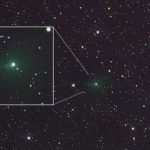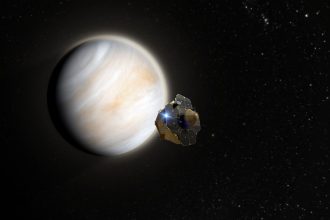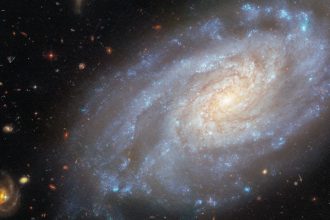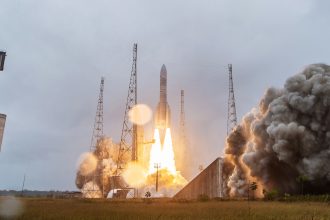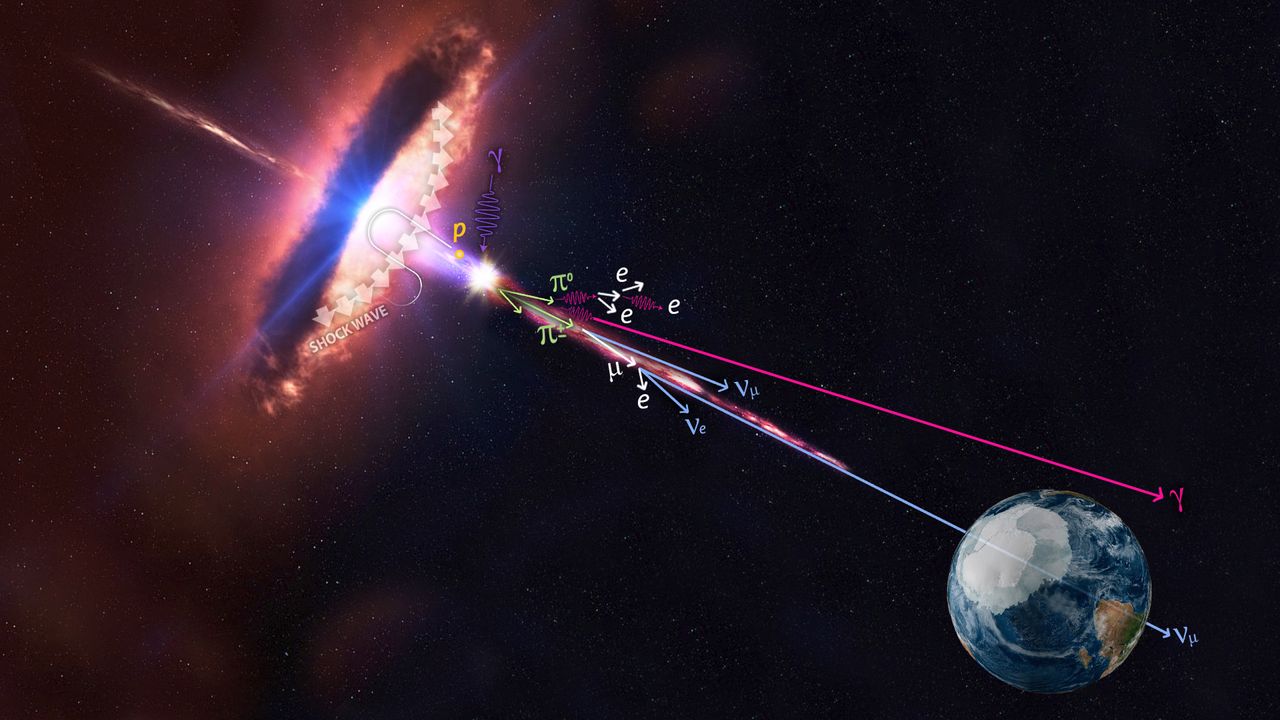
Imagine a particle so ghostly that over 100 trillion of them could pass through you every single second without you noticing anything at all. Spooky, right? Well, believe it or not, these particles, called “neutrinos,” not only exist, but they are so abundant that they are the second most common particle in the universe (after photons, the particles that make up light).
So, you might not get visited by a phantom this Halloween, but you’ll definitely encounter plenty of cosmic ghost neutrinos, yet you won’t notice a single thing. In fact, you’re encountering them right now.
The ethereal nature of neutrinos, understandably nicknamed “ghost particles,” means that despite how common they are, and the fact we are being constantly pelted with trillions of them, scientists haven’t been able to get a good handle on many of their characteristics. For instance, their masses are shrouded in mystery. That is troubling because the sheer abundance of neutrinos in the observable universe — , about 10 to the power 87 (or 10 followed by 86 zeroes) — means they must have played a key role in the development of the cosmos even though they rarely interact with other particles of matter.
You may like
For example, scientists theorize that neutrinos were vitally important in the process that led to matter vastly outweighing antimatter in the universe. Antimatter and matter should have been created in equal amounts by the Big Bang — shouldn’t they be perfectly symmetrical because they’re made of the same particle components, just with opposite charges? — it is perplexing how one came to rule over the other. And, because when matter and antimatter counterparts meet, they annihilate each other; if it weren’t for the process that gave matter the upper hand, the universe may have been devoid of matter altogether.
Like the Scooby-Doo-gang approaching another haunted mansion or abandoned funfair, scientists are determined to get to the bottom of this cosmic ghost story. As you might imagine, even though neutrinos are created by a wealth of cosmic events like stars and supernovas and even nuclear reactors here on Earth, the fact that they are virtually massless, chargeless and traverse the cosmos at near the speed of light means detecting them is much harder than nabbing Mr. Carswell the corrupt bank manager or dastardly museum curator Mr. Wickles.
However, just like Fred, Velma, Daphne, Shaggy and Scooby always come together to remove another rubber fright mask and expose a spooky crook, selected scientists have gathered via 2025’s Science Policy & Advocacy for Research Competition (SPARC) to solve the mystery of these cosmic phantoms. Lasting 10 weeks, the SPARC seminar series aims to equip scientists with essential skills in science policy and communication, helping them translate complex research into clear messages for nontechnical audiences.
And neutrinos really fit the bill.
“I’ve always been fascinated by how we extract information from reality — even when we can’t fully define what reality is,” Karim Hassinin, a Ph.D. candidate at the University of Houston and SPARC participant, said in a statement. “Theory, at its core, is a kind of storytelling, and every model is just one way of seeing the world. Through this program, I hope to learn how to translate those complex layers of scientific reasoning into stories that anyone can understand — so people can see not just the data, but the wonder behind discovery.”
Hassinin is behind a new way to think about neutrinos, developed as a result of teaching an undergraduate physics class and seeing that his students had different perspectives on these cosmic phantoms. He is bringing that new approach to SPARC and, through it, to a wider general audience.
“The technical details will always be there, but it’s essential to show people the purpose of science and how it shapes our world,” Hassinin said. “Our daily lives depend on technology, and technology depends on science. Through SPARC, I’ve gained a new perspective on how vital it is to bridge the gap between complex research and public understanding — because science communication truly matters everywhere.”
You may like
In terms of his research, Hassinin uses computer simulations to investigate how neutrinos work their ghostly magic as they pass through different types of materials.
“We tell the generator how many neutrinos we want to use, what type of neutrino, and what material we want the neutrino to interact with,” Hassinin explained. “Without neutrino interactions, we don’t know anything about neutrinos. We have to understand something deeply before we can understand how to apply it.”
Meghna Bhattacharya, a Postdoctoral Research Associate at Fermi National Accelerator Laboratory (Fermilab), is another scientist hot on the trail of neutrinos, focusing on algorithms that could identify neutrinos ejected into the universe when massive stars reach the end of their lives and go supernova.
Bhattacharya’s work is set to play a key role in helping to develop the Deep Underground Neutrino Experiment (DUNE), two neutrino detectors placed in an intense beam of trillions of neutrinos currently under development near Fermilab, Illinois, and a far detector at the Sanford Underground Research Facility (SURF), South Dakota.
“These tools are designed to be integrated into DUNE, contributing to major questions about the universe’s evolution while also advancing computational techniques in physics,” Bhattacharya said. “The tools being developed to answer fundamental science questions often lead to broader real-world applications. For example, technologies like proton beams, originally used in particle physics, are now being used for cancer treatment.”
For Bhattacharya, the appeal of SPARC is the opportunity to share the story of her research with a wider audience and to make this audience aware of its wider impact on society.
“Looking forward, I hope to grow as a communicator and advocate for science more effectively, not only to learn how to distill complex research into accessible narratives but also to pass down the excitement of my research,” she concluded.







